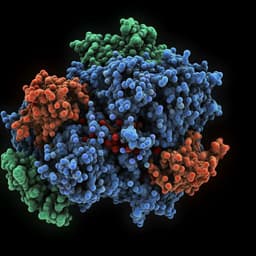
Biology
Improving prime editing with an endogenous small RNA-binding protein
J. Yan, P. Oyler-castrillo, et al.
Explore the groundbreaking findings on prime editing, a precise genome editing technique, unveiled by researchers Jun Yan and colleagues. This study identifies La, a small RNA-binding protein, as a key player in enhancing prime editing efficiency across various methods and cell types, providing insightful strategies for RNA stability.
~3 min • Beginner • English
Related Publications
Explore these studies to deepen your understanding of the subject.







